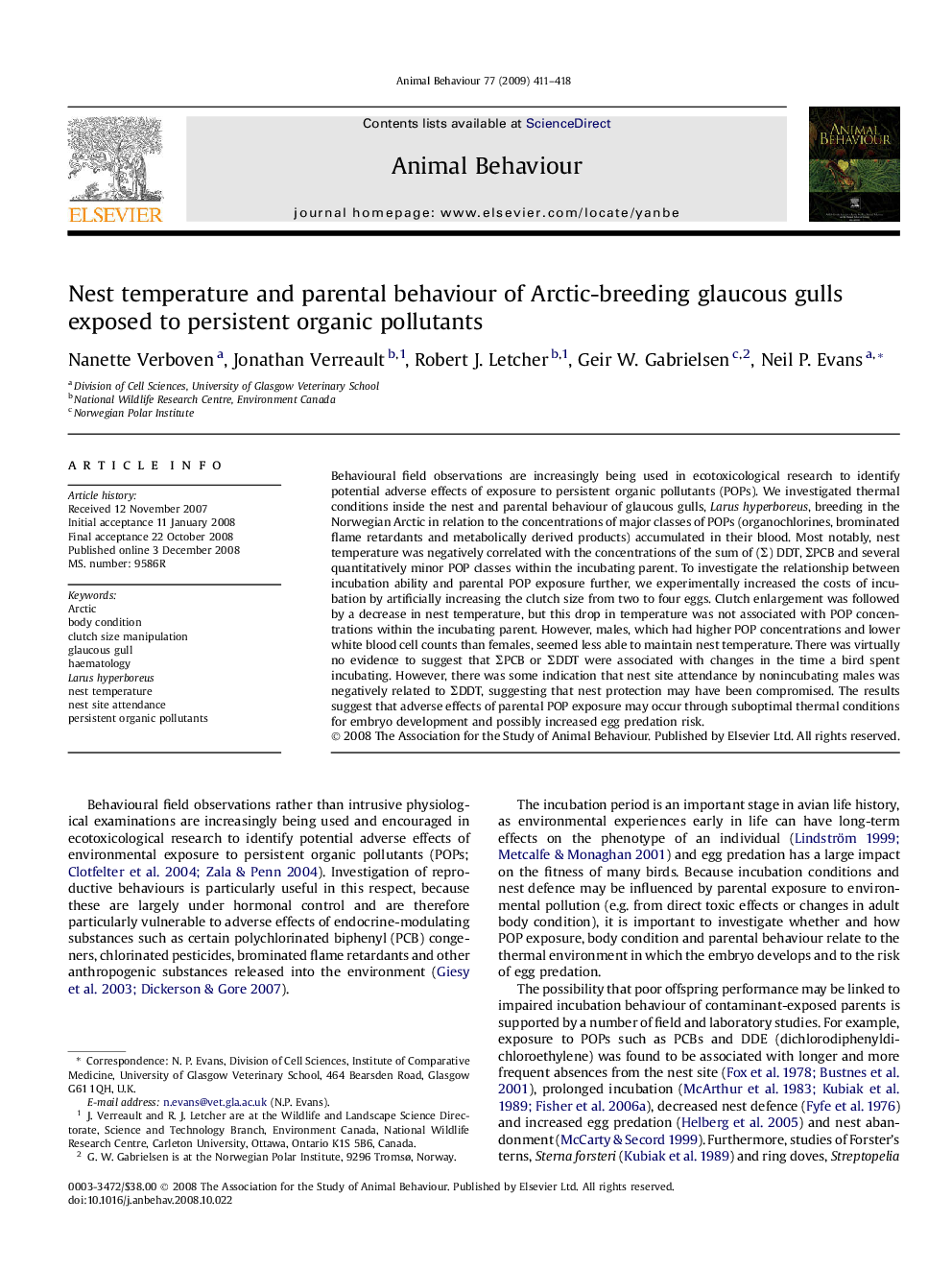| کد مقاله | کد نشریه | سال انتشار | مقاله انگلیسی | نسخه تمام متن |
|---|---|---|---|---|
| 2418164 | 1104339 | 2009 | 8 صفحه PDF | دانلود رایگان |

Behavioural field observations are increasingly being used in ecotoxicological research to identify potential adverse effects of exposure to persistent organic pollutants (POPs). We investigated thermal conditions inside the nest and parental behaviour of glaucous gulls, Larus hyperboreus, breeding in the Norwegian Arctic in relation to the concentrations of major classes of POPs (organochlorines, brominated flame retardants and metabolically derived products) accumulated in their blood. Most notably, nest temperature was negatively correlated with the concentrations of the sum of (Σ) DDT, ΣPCB and several quantitatively minor POP classes within the incubating parent. To investigate the relationship between incubation ability and parental POP exposure further, we experimentally increased the costs of incubation by artificially increasing the clutch size from two to four eggs. Clutch enlargement was followed by a decrease in nest temperature, but this drop in temperature was not associated with POP concentrations within the incubating parent. However, males, which had higher POP concentrations and lower white blood cell counts than females, seemed less able to maintain nest temperature. There was virtually no evidence to suggest that ΣPCB or ΣDDT were associated with changes in the time a bird spent incubating. However, there was some indication that nest site attendance by nonincubating males was negatively related to ΣDDT, suggesting that nest protection may have been compromised. The results suggest that adverse effects of parental POP exposure may occur through suboptimal thermal conditions for embryo development and possibly increased egg predation risk.
Journal: Animal Behaviour - Volume 77, Issue 2, February 2009, Pages 411–418